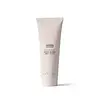What's inside
What's inside
 Key Ingredients
Key Ingredients

 Benefits
Benefits

 Concerns
Concerns

 Ingredients Side-by-side
Ingredients Side-by-side

Water
Skin ConditioningGlycerin
HumectantButylene Glycol
HumectantPEG-40 Hydrogenated Castor Oil
EmulsifyingCaprylic/Capric Triglyceride
MaskingCeramide AP
Skin Conditioning1,2-Hexanediol
Skin ConditioningAmmonium Acryloyldimethyltaurate/Vp Copolymer
Cucumis Sativus Juice
EmollientCoenzyme A
Skin ConditioningPalmitoyl Tripeptide-1
Skin ConditioningPalmitoyl Tetrapeptide-7
Skin ConditioningBupleurum Falcatum Root Extract
Skin ConditioningCaffeine
Skin ConditioningCitric Acid
BufferingAscorbic Acid
AntioxidantRosa Canina Fruit Oil
EmollientTocopherol
AntioxidantPanthenol
Skin ConditioningTrilaureth-4 Phosphate
EmulsifyingCarbomer
Emulsion StabilisingPhenoxyethanol
PreservativeSodium Hydroxide
BufferingTocopheryl Acetate
AntioxidantPropylene Glycol
HumectantTrisodium Ethylenediamine Disuccinate
Saccharide Isomerate
HumectantPEG-8
HumectantSodium Citrate
BufferingPolysorbate 20
EmulsifyingBiotin
AntiseborrhoeicSodium Benzoate
MaskingPhosphoric Acid
BufferingPotassium Sorbate
PreservativeSodium Lactate
BufferingSodium Sulfite
PreservativeWater, Glycerin, Butylene Glycol, PEG-40 Hydrogenated Castor Oil, Caprylic/Capric Triglyceride, Ceramide AP, 1,2-Hexanediol, Ammonium Acryloyldimethyltaurate/Vp Copolymer, Cucumis Sativus Juice, Coenzyme A, Palmitoyl Tripeptide-1, Palmitoyl Tetrapeptide-7, Bupleurum Falcatum Root Extract, Caffeine, Citric Acid, Ascorbic Acid, Rosa Canina Fruit Oil, Tocopherol, Panthenol, Trilaureth-4 Phosphate, Carbomer, Phenoxyethanol, Sodium Hydroxide, Tocopheryl Acetate, Propylene Glycol, Trisodium Ethylenediamine Disuccinate, Saccharide Isomerate, PEG-8, Sodium Citrate, Polysorbate 20, Biotin, Sodium Benzoate, Phosphoric Acid, Potassium Sorbate, Sodium Lactate, Sodium Sulfite
Water
Skin ConditioningIsopentyldiol
HumectantJojoba Esters
EmollientCetyl Alcohol
EmollientCetearyl Alcohol
EmollientStearyl Alcohol
EmollientTheobroma Cacao Seed Butter
EmollientRetinol
Skin ConditioningSqualane
EmollientTocopherol
AntioxidantCaprylic/Capric Triglyceride
MaskingXanthan Gum
EmulsifyingCetearyl Glucoside
EmulsifyingHydroxyacetophenone
Antioxidant1,2-Hexanediol
Skin ConditioningCaprylyl Glycol
EmollientHydrogenated Lecithin
EmulsifyingPolyglyceryl-10 Dioleate
EmulsifyingCitric Acid
BufferingSodium Gluconate
Skin ConditioningGlycine Soja Oil
EmollientPolyglyceryl-10 Dipalmitate
EmollientPhenoxyethanol
PreservativeErgothioneine
AntioxidantWater, Isopentyldiol, Jojoba Esters, Cetyl Alcohol, Cetearyl Alcohol, Stearyl Alcohol, Theobroma Cacao Seed Butter, Retinol, Squalane, Tocopherol, Caprylic/Capric Triglyceride, Xanthan Gum, Cetearyl Glucoside, Hydroxyacetophenone, 1,2-Hexanediol, Caprylyl Glycol, Hydrogenated Lecithin, Polyglyceryl-10 Dioleate, Citric Acid, Sodium Gluconate, Glycine Soja Oil, Polyglyceryl-10 Dipalmitate, Phenoxyethanol, Ergothioneine
 Reviews
Reviews

Ingredients Explained
These ingredients are found in both products.
Ingredients higher up in an ingredient list are typically present in a larger amount.
1,2-Hexanediol is a synthetic liquid and another multi-functional powerhouse.
It is a:
- Humectant, drawing moisture into the skin
- Emollient, helping to soften skin
- Solvent, dispersing and stabilizing formulas
- Preservative booster, enhancing the antimicrobial activity of other preservatives
This ingredient is an emollient, solvent, and texture enhancer. It is considered a skin-softener by helping the skin prevent moisture loss.
It helps thicken a product's formula and makes it easier to spread by dissolving clumping compounds.
Caprylic Triglyceride is made by combining glycerin with coconut oil, forming a clear liquid.
While there is an assumption Caprylic Triglyceride can clog pores due to it being derived from coconut oil, there is no research supporting this.
Learn more about Caprylic/Capric TriglycerideCitric Acid is an alpha hydroxy acid (AHA) naturally found in citrus fruits like oranges, lemons, and limes.
Like other AHAs, citric acid can exfoliate skin by breaking down the bonds that hold dead skin cells together. This helps reveal smoother and brighter skin underneath.
However, this exfoliating effect only happens at high concentrations (20%) which can be hard to find in cosmetic products.
Due to this, citric acid is usually included in small amounts as a pH adjuster. This helps keep products slightly more acidic and compatible with skin's natural pH.
In skincare formulas, citric acid can:
While it can provide some skin benefits, research shows lactic acid and glycolic acid are generally more effective and less irritating exfoliants.
Most citric acid used in skincare today is made by fermenting sugars (usually from molasses). This synthetic version is identical to the natural citrus form but easier to stabilize and use in formulations.
Read more about some other popular AHA's here:
Learn more about Citric AcidPhenoxyethanol is a preservative that has germicide, antimicrobial, and aromatic properties. Studies show that phenoxyethanol can prevent microbial growth. By itself, it has a scent that is similar to that of a rose.
It's often used in formulations along with Caprylyl Glycol to preserve the shelf life of products.
Tocopherol (also known as Vitamin E) is a common antioxidant used to help protect the skin from free-radicals and strengthen the skin barrier. It's also fat soluble - this means our skin is great at absorbing it.
Vitamin E also helps keep your natural skin lipids healthy. Your lipid skin barrier naturally consists of lipids, ceramides, and fatty acids. Vitamin E offers extra protection for your skin’s lipid barrier, keeping your skin healthy and nourished.
Another benefit is a bit of UV protection. Vitamin E helps reduce the damage caused by UVB rays. (It should not replace your sunscreen). Combining it with Vitamin C can decrease sunburned cells and hyperpigmentation after UV exposure.
You might have noticed Vitamin E + C often paired together. This is because it is great at stabilizing Vitamin C. Using the two together helps increase the effectiveness of both ingredients.
There are often claims that Vitamin E can reduce/prevent scarring, but these claims haven't been confirmed by scientific research.
Learn more about TocopherolWater. It's the most common cosmetic ingredient of all. You'll usually see it at the top of ingredient lists, meaning that it makes up the largest part of the product.
So why is it so popular? Water most often acts as a solvent - this means that it helps dissolve other ingredients into the formulation.
You'll also recognize water as that liquid we all need to stay alive. If you see this, drink a glass of water. Stay hydrated!
Learn more about Water